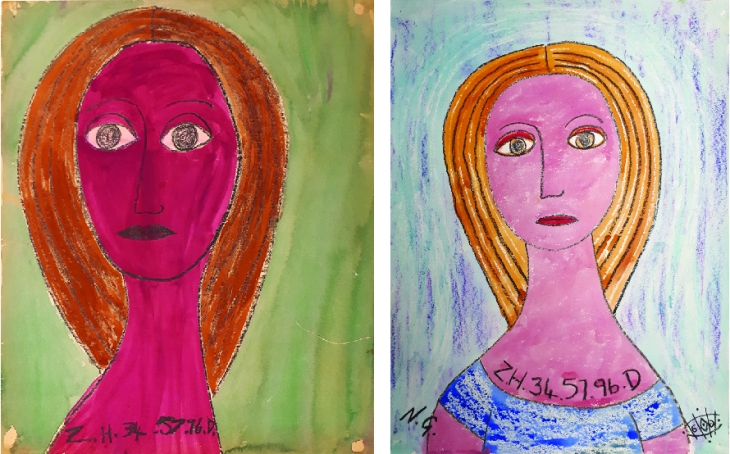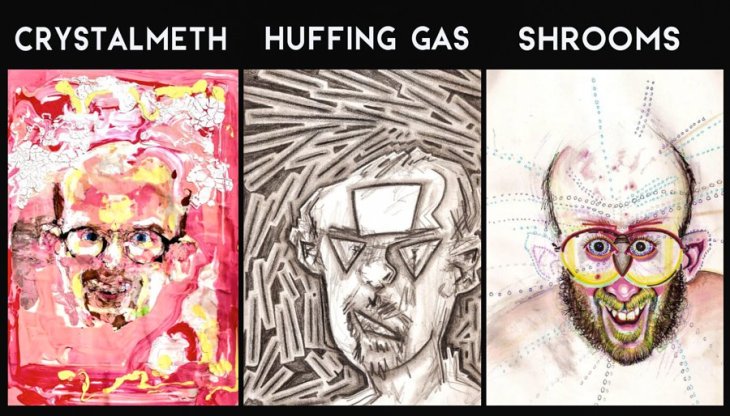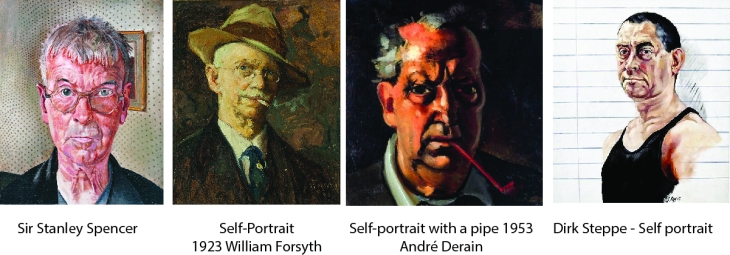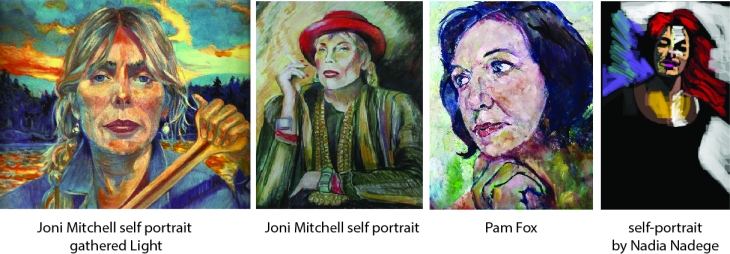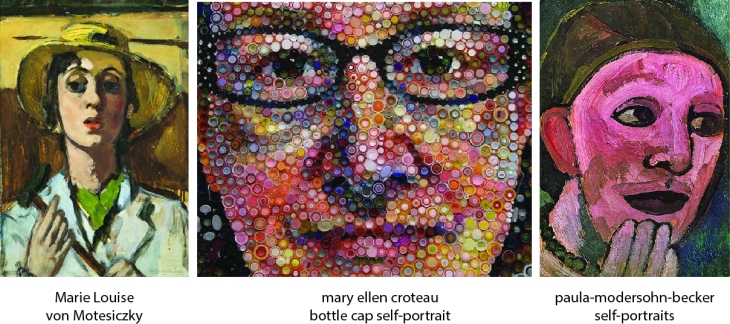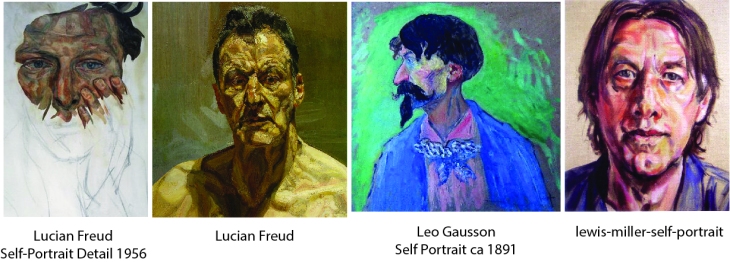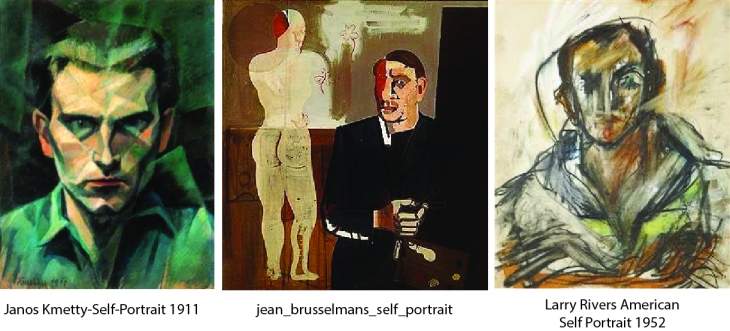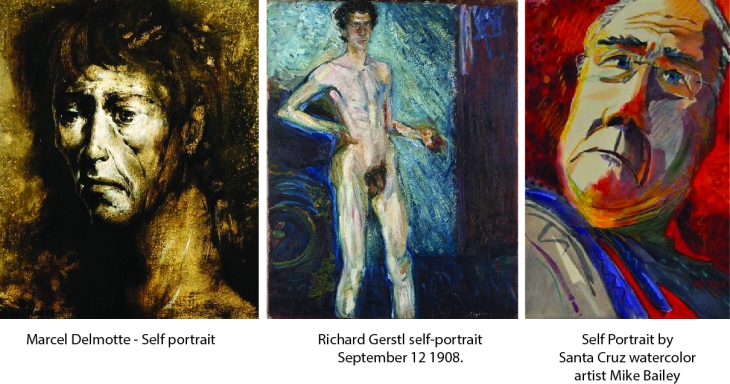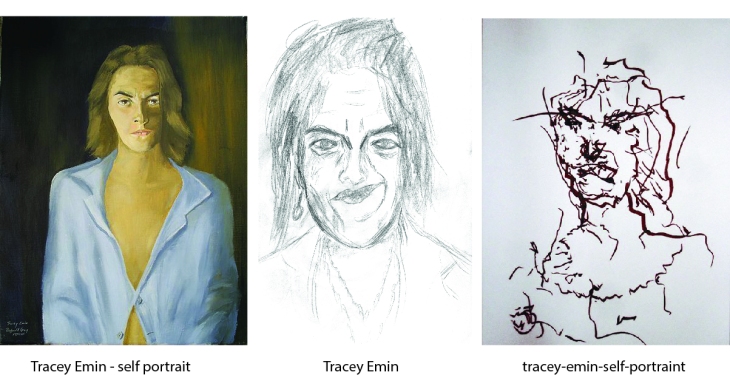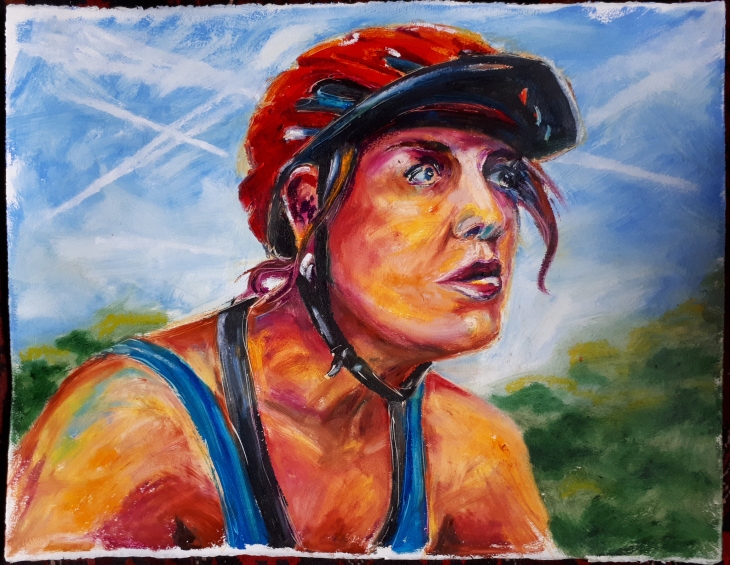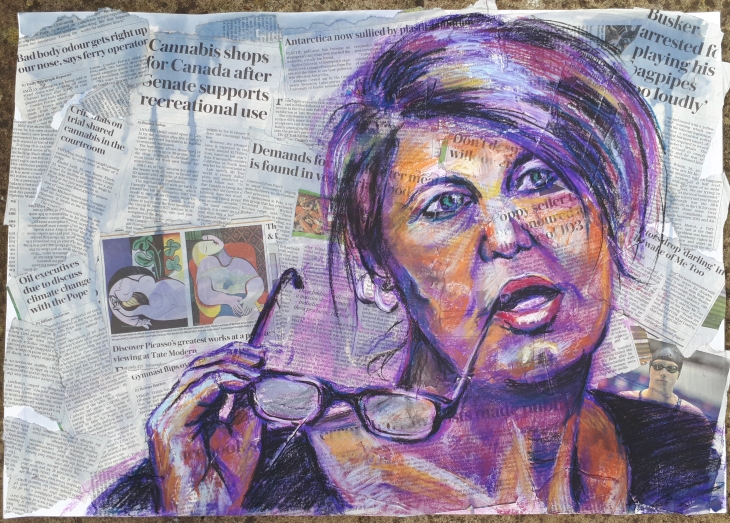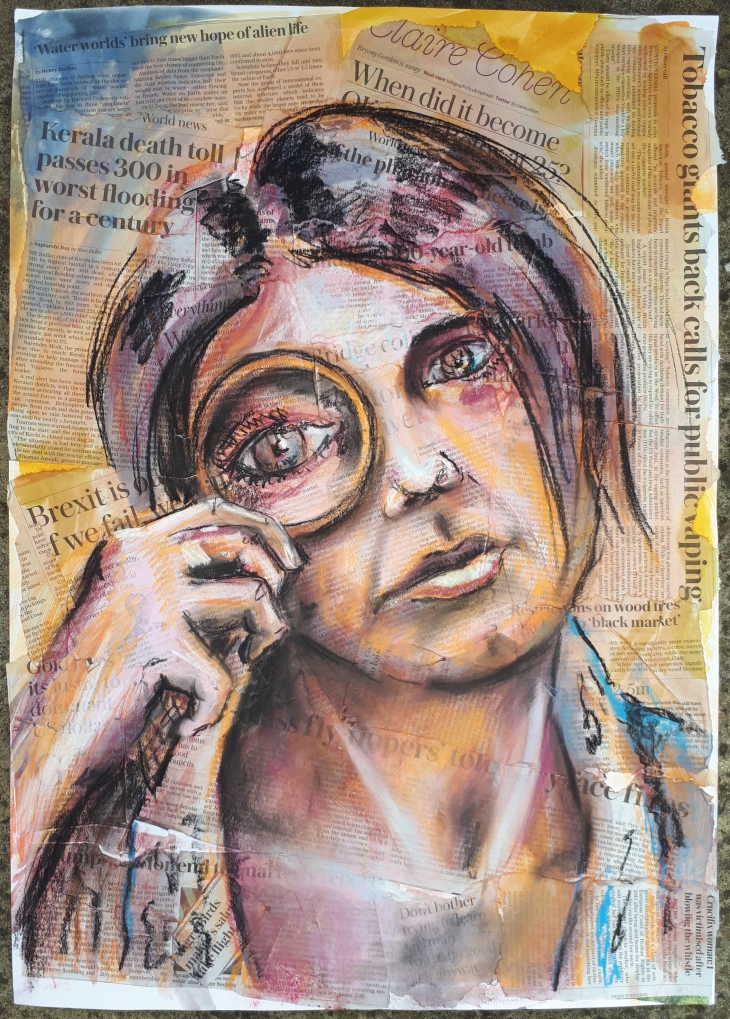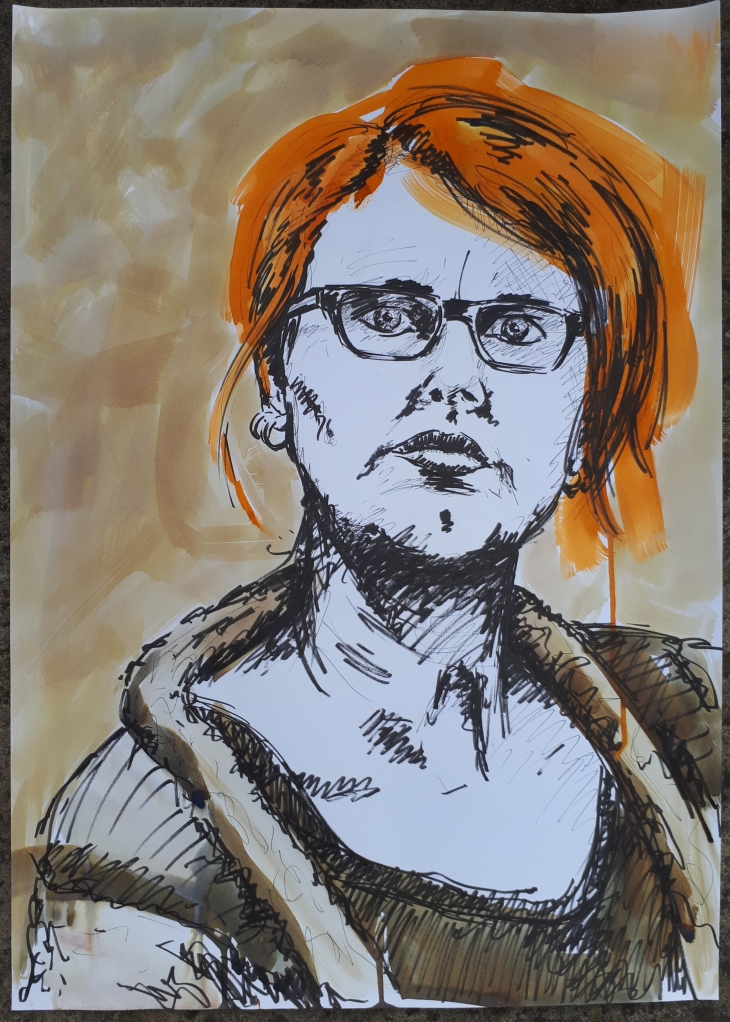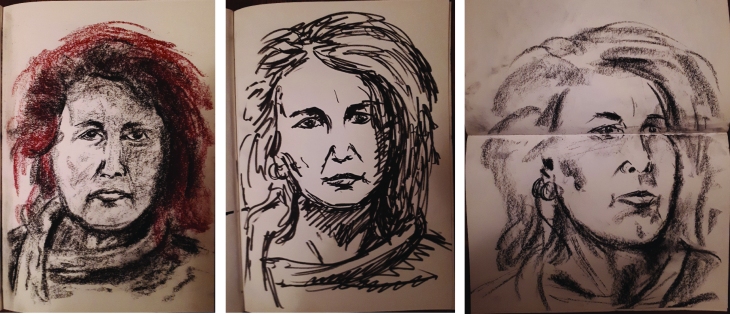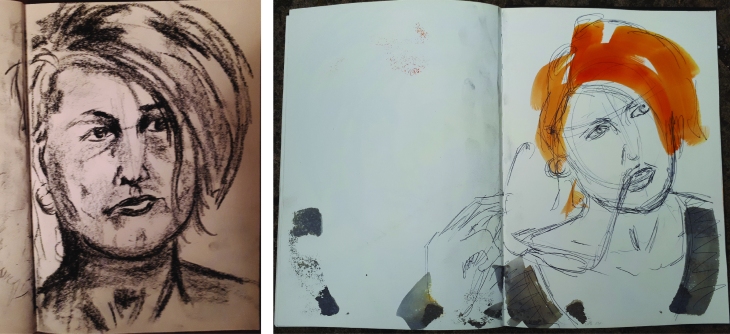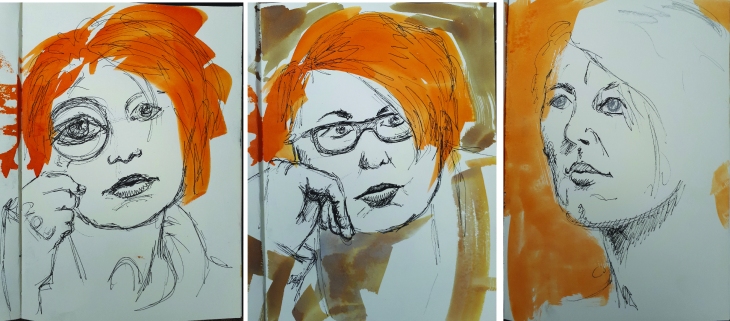Part 4; Project 6; The head, Exercise 3 – Portrait from memory or the imagination.
I have chosen to combine this exercise with some research work that I have been doing with Outside In on their Step Up Course at the Wellcome Trust looking at the Adamson Collection which is where I discovered the work of Joan Wisdom in the uncatalogued archives. I have written blog posts on my research on my website www.bluesunflower.com documenting my research and my study of her work.
Joan Wisdom – A portrait from memory or the imagination

A Portrait of Joan Wisdom – Joan’s Story
Having looked through all of the work in the Adamson Collection held at the Wellcome Trust that Joan Wisdom produced while she was a patient at Netherne Mental Hospital in the 1960’s, I really felt that I had made a connection with her.
Original ‘Self Portrait by Joan Wisdom’
and ‘A Portrait of Joan Wisdom’ by Niki Gibbs
My task was to produce an artistic response to her work, I was a little unsure about how that would actually come to fruition, but I made a conscious effort to be completely intuitive about the process and open minded about what I finally produced.
My first thought was to make a short film of Joan’s work, looking at the textures and compositions in detail and compiling them in After Effects with tracks, pans and fades between the works and put to music. I started, but after only a few image placements I decided that this was not the way forward for now, although this may be an avenue that is worth pursuing in the future.
What I actually had an overwhelming urge to do was to have a go at experiencing producing artwork in the same way that Joan would have done. I set myself up with an easel and a table and purchased the materials that would have been available to Joan in Edward Adamson’s studio at Netherne; Poster Paints, wax Crayons, a thick and thin paintbrushes and some Lining Wall Paper folded and torn into pieces of the correct size, approximately 22 x 16 inches, which I then pinned to a wooden board set on the easel.
I looked really hard at Joan’s work, noticing which lines she drew first, what order the layers were put down in and what colours she used. I wanted to keep all my drawings faithful to the original source so I did not rough the shapes out first, I drew everything straight up having just planned and thought out the image in my head before I started. This method is quite open to mistakes and error in placement of line, colour and wax resist, but I felt that authenticity to the process was vital.

Joan Wisdom Portrait, Joan with Cat and ‘Everyone telling me what to do’
I tried to incorporate elements and patterns that I saw in Joan’s work while imagining what it must have been like for her living at Netherne derived from the clues that I found in her work.
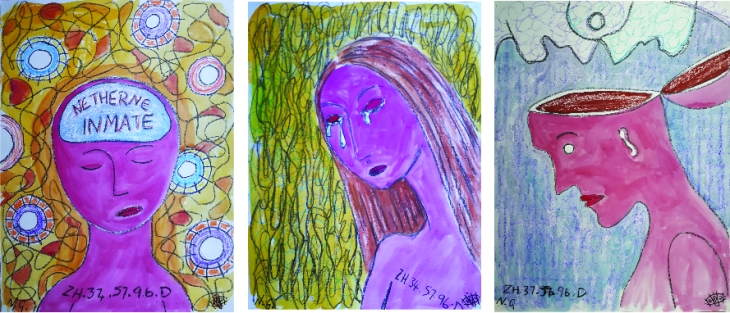
Nrtherne Imnate, Looking inside my Head and Crying
I wanted to crate images that Joan herself might have painted, in the same style and by the same rules. The image ‘Crying’ I later realised did not conform as Joan did not draw three-quarter views of the face, she only drew them face on or in profile, she also did not draw realistic tears, she drew tears as petals in red, and in this drawing I feel that she is a little out of character.
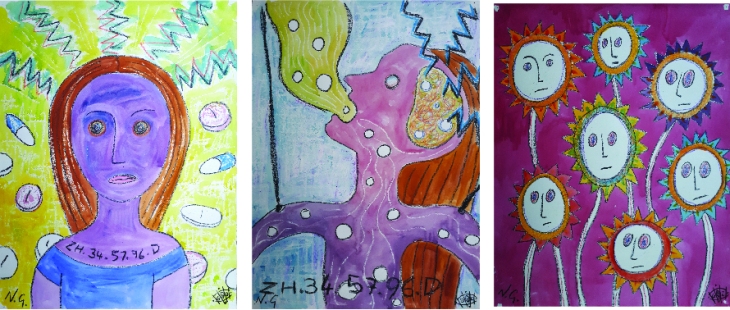
Treatment, Treatment plan and Lost Souls of Netherne
I looked closely at Joan’s paintings and tried to apply the colours that she used for her complexion when she was feeling emotional or unwell to try and convey how she felt that she was being treated. I emulated Joan’s Lost Souls painting by giving the lost souls a Netherne makeover by turning them into flowers, I think in an effort to give them some identity.
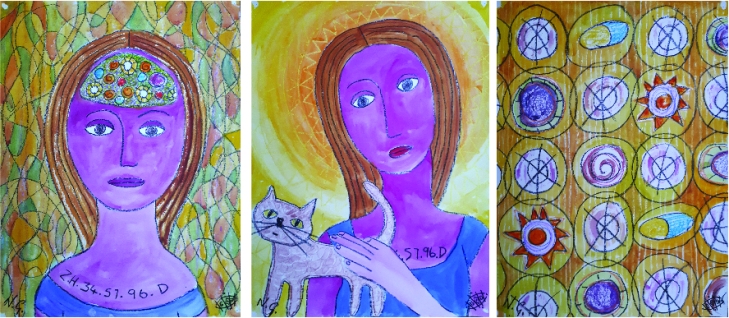
‘They Played with my Brain’, Joan Stroking the Cat and Pills in patterns
I always thought that Joan’s patterns would make great wallpaper designs so I had a go at conveying them in that way. I wondered if the circles that she used prolifically in her designs reflected in any way the drugs that she was given, so I wanted to include this element in the design. I felt that I needed to add some more cats to the collection, so I included Joan stroking the cat together in the picture as I felt that this showed a tender side to her and her relationship with the cats. The last image reflects what she felt the doctors had done to her brain with their treatments.
.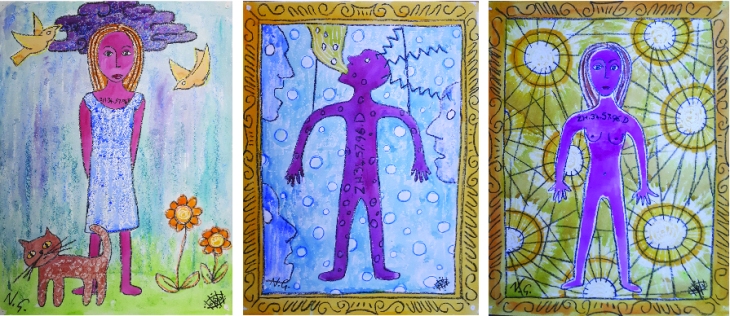
Joan in the Gardens, Doctors observing Treatment and In the Spotlight
Joan occasionally drew a full figure of herself and rarely drew scenes, the only one being her ‘Bird and Cat’ drawing. I noticed that in the images that she wore clothes she wore just a simple blue dress, and where she depicted herself naked she made herself androgynous with her hospital number emblazoned across her. She writes her hospital number on many of her works, so I applied that same rule to my drawings, it was a form of identifying herself in an impersonal manner. By placing her in a frame I am alluding to the focus and scrutiny that she must have felt. In the spotlight image I gave her breasts so as to give her her femininity back.

The Mona Lisa Series 1
Having by chance caught a glimpse of The Mona Lisa I realised that Joan had a similar mystery about her so I produced a series that I felt told her story. By this time I had realised that the images that I was painting told Joan’ story and would work well as a slide show movie. Having finished this series, I then realised that I had to do the whole series again, be more specific about the story and put her in a frame, so I did them again!
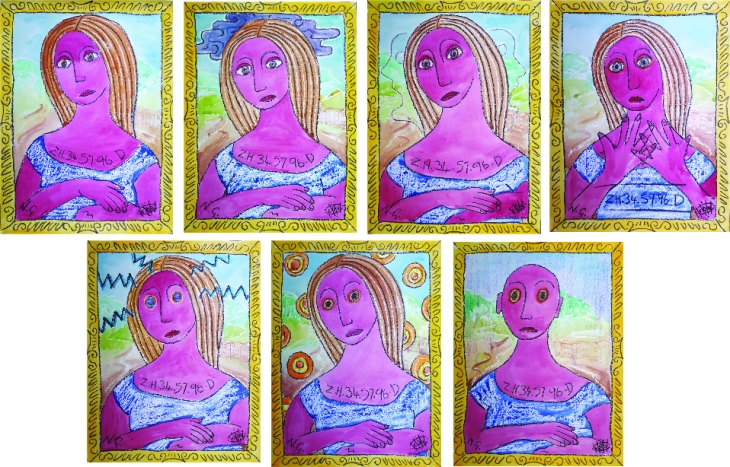
The Mona Lisa Series 2
In this second series I included the depression cloud in the second image and the screaming faces in the background of the third. I think they make a far better series with the frames included.
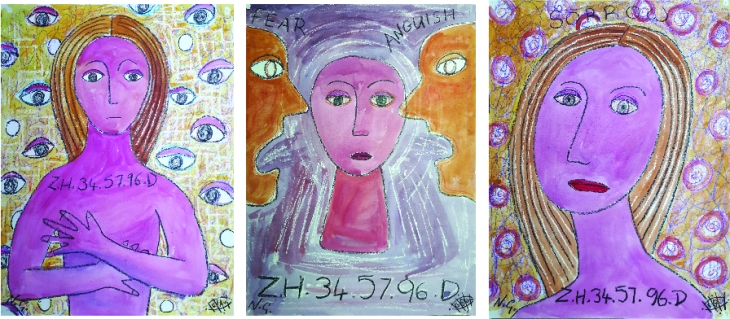
All eyes on Joan, Fear and Anguish and ‘Sorrow’
I wanted to explore how Joan would have felt and emulate some of her works that expressed her emotions. By now I have got better at using the wax to create texture and the amount of pigment and water to use in the paint to get the right effect.
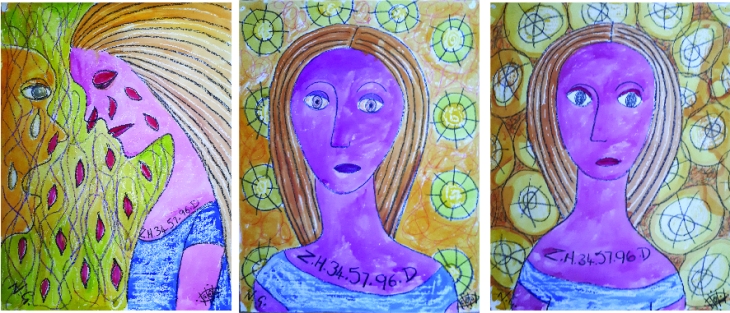
Crying tears of Petals, A Portrait in the Spotlight and A portrait of Joan Wisdom
I re-did the crying image to make it more true to Joan’s original and finished by doing a couple of portraits of her to conclude the story that the movie slideshow would tell.
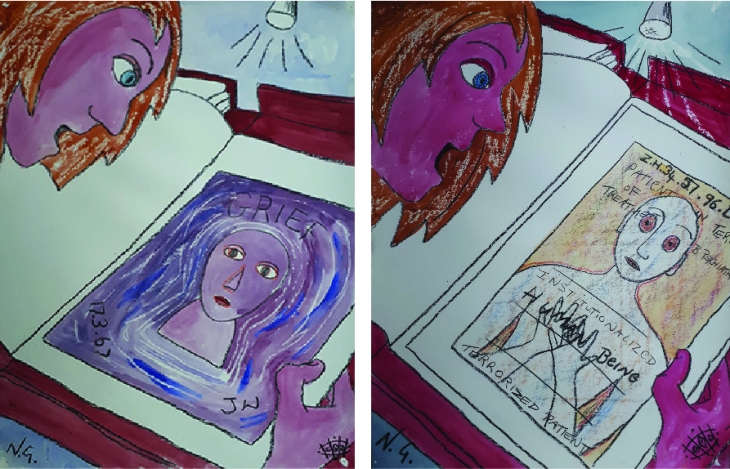
Meeting Joan Wisdom ‘Grief and Meeting Joan Wisdom ‘Institutionalized Human Being’
I realised that for my story I would need an introductory image so I drew myself looking at her work, which would also familiarize the viewer with her style of work. The first one I drew I was looking at her grief painting, however later I realised that I should use the ‘Institutionalized Human Being’ painting as this was the one that I discovered and managed to get rightly re-attributed to her and was therefore a more pertinent addition to the story.

Imaginary portraits of Joan Wisdom
I am doing a Distance learning drawing and painting degree for which I had to produce a portrait of someone that I imagined or had only had a fleeting glance of. Taking clues from her paintings and keeping elements of her style (wax crayons and poster paint on wallpaper) I have tried to imagine what Joan Wisdom may have looked like. I drew on the delicate features that she expresses in the profile images, her long straight brown hair and slightly undernourished frame, drawn from the fact that she mentions the lack of nourishing food at Netherne in her work. Unsure as to how old she was, I have tried a couple of age ranges, possibly in her twenties and the other in her 30’s or 40’s.
A Portrait of Joan Wisdom
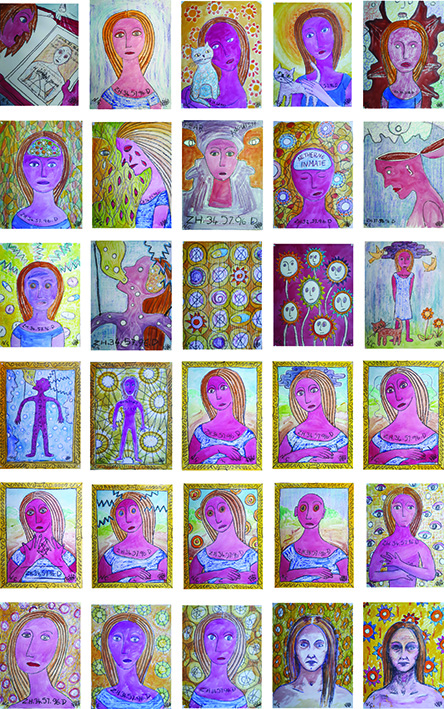
I have collated all the imaged that I included in the Slideshow movie in order into a single portrait of multiple images as one that tells her story in a portrait.
Additional Images
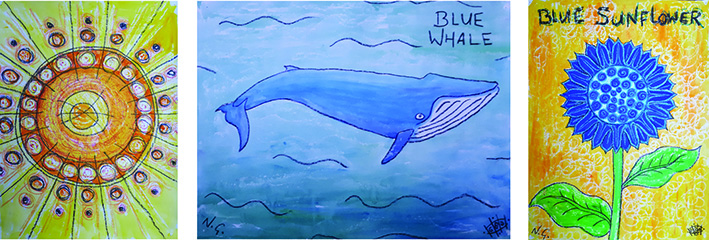
Sun, Blue Whale and Blue Sunflower
By Niki Gibbs
August 2018

